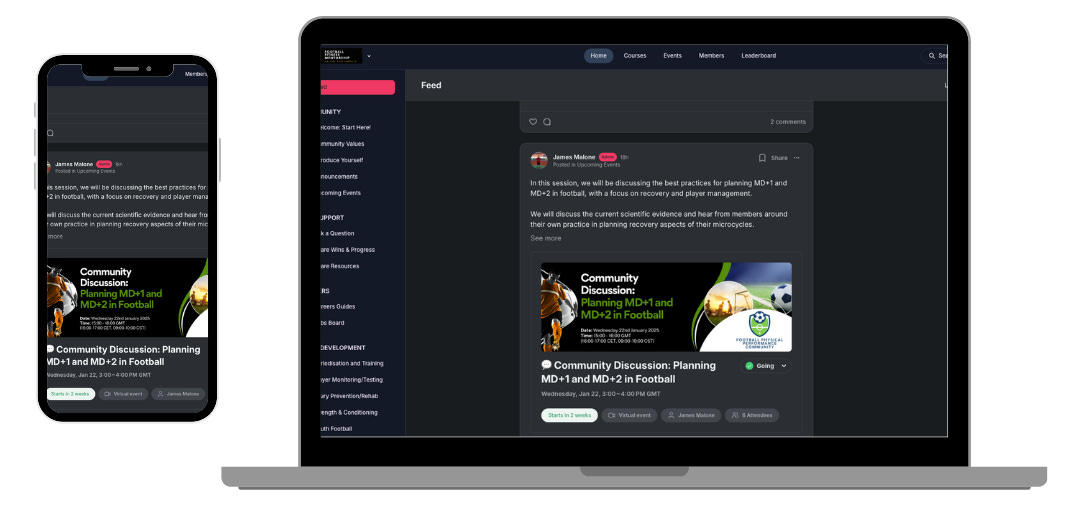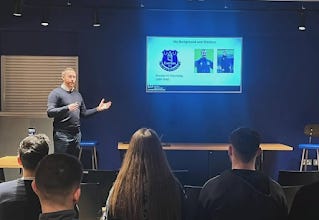Priming Exercise: More Than Just Physiology?
In football, small margins can make the difference between winning and losing.
One strategy gaining traction in high-performance environments is priming exercise - a short, low-volume workout prescribed hours before a match or training session to boost same-day performance.
Research has shown improvements in sprinting, jumping, and strength measures after priming, but the underlying reasons remain less clear.
A new commentary by Holmberg & Kelly (2025) challenges the idea that priming is purely a physiological tool and argues that we may need to broaden our view to understand why it works.
What Might Be Happening?
Much of the early discussion around priming has centred on hormones, particularly testosterone. Some studies suggest that priming can blunt the natural decline in testosterone across the day, supporting higher levels of performance later on.
Yet the actual hormonal changes are often small, inconsistent, and may not reach biologically meaningful thresholds. Hormones may contribute, but they cannot fully explain the observed improvements.
Another proposed explanation lies in mechanical stiffness. After heavy or plyometric work, muscles can temporarily become stiffer, which may improve force transmission and enhance sprint or jump performance in the hours that follow.
However, whether this is due to muscle damage, inflammation, or simply neuromuscular coordination is unclear. It may be that stiffness changes are as much about movement efficiency and control as they are about physiology.
A more straightforward account is task-specificity. In practice, priming may work simply because it rehearses a skill. Squatting before a countermovement jump test provides a technical and neural rehearsal of the movement.
Sprinting before sprint testing produces faster times, while non-specific exercises often fail to transfer. In this view, priming may be less about “unlocking physiology” and more about sharpening the body’s readiness for the exact task to come.
Perhaps the most intriguing explanation is psychological. Goal priming research suggests that belief, expectation, and focus can shape performance. If a player thinks priming will help, it may increase motivation, concentration, and confidence. E
Even subtle cues from coaches, such as their confidence in the process, can amplify this effect. In this sense, priming might function as much as a psychological tool as a physical one.
Practical Applications
For practitioners, the key is to design priming strategies with intention. Choose exercises that reflect the demands of the upcoming task, such as sprints for speed or squats for jumps.
Deliver them with clarity and purpose, recognising that your language and belief can directly influence how players respond.
Timing also matters, with most benefits observed within an eight-hour window, though this may vary between individuals.
Above all, remember that players will not all respond in the same way. Some may benefit more from the physical boost, while others may draw more from the psychological lift that priming provides.
Take Home Message
Priming exercise has clear potential to enhance same-day performance, but its effects are unlikely to be explained by physiology alone. Instead, it seems to operate through a blend of hormonal, mechanical, task-specific, and psychological factors.
For S&C coaches and sport scientists, this means treating priming as both a physical and mental preparation tool, tailored to the demands of the task and the needs of the individual.
That's all for today.
See you next Friday.
James
🚀 Join the Waitlist for The Football Performance Network
Take your career in football to the next level by joining a global community of 70+ physical performance and sport science practitioners.
As a member, you'll get:
✅ Direct 1:1 mentorship
✅ Live events with industry-leading experts
✅ Practical, high-quality educational content
✅ A supportive network that understands your journey
⚽️ Our next cohort opens in January 2026 and spaces are limited to 30 spaces.
🔗 Join the waitlist today to be first in line when applications open.
📃 Become CASES Accredited
Become CASES Accredited through a structured 6 month cohort programme.
Want to become CASES accredited as a physical performance practitioner in football but feel lost by the process?
Join the accelerated 6 month programme led by Dr James Malone to achieve your CASES accreditation.
🗣 Keynote Speaking
Looking for an enthusiastic keynote speaker with expertise in football science for your next event?
Over the past 15 years I have worked in the Premier League, commercial world supporting elite football teams and leading high-impact football research projects within academia.
My keynote sessions use a blend of the latest scientific evidence coupled with practical knowledge and implementation to make each session impactful for the audience.
Common keynote topics include:
✅ Football periodisation and planning
✅ Recovery strategies in football
✅ Player monitoring and load management
I’m available for both in-person events and online webinars.



